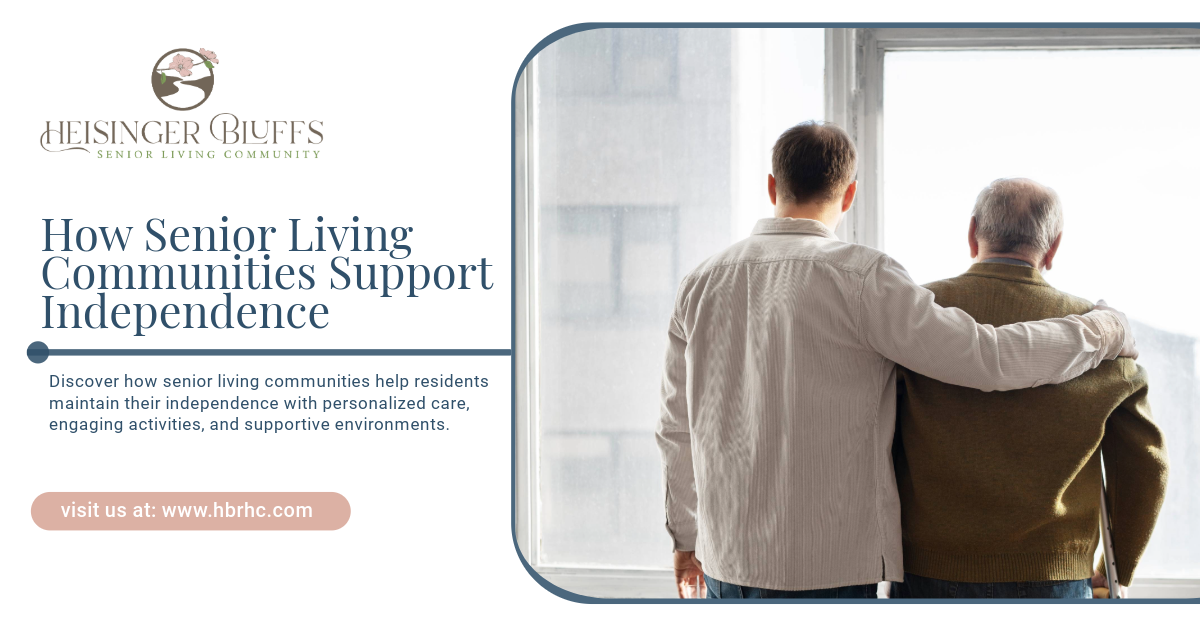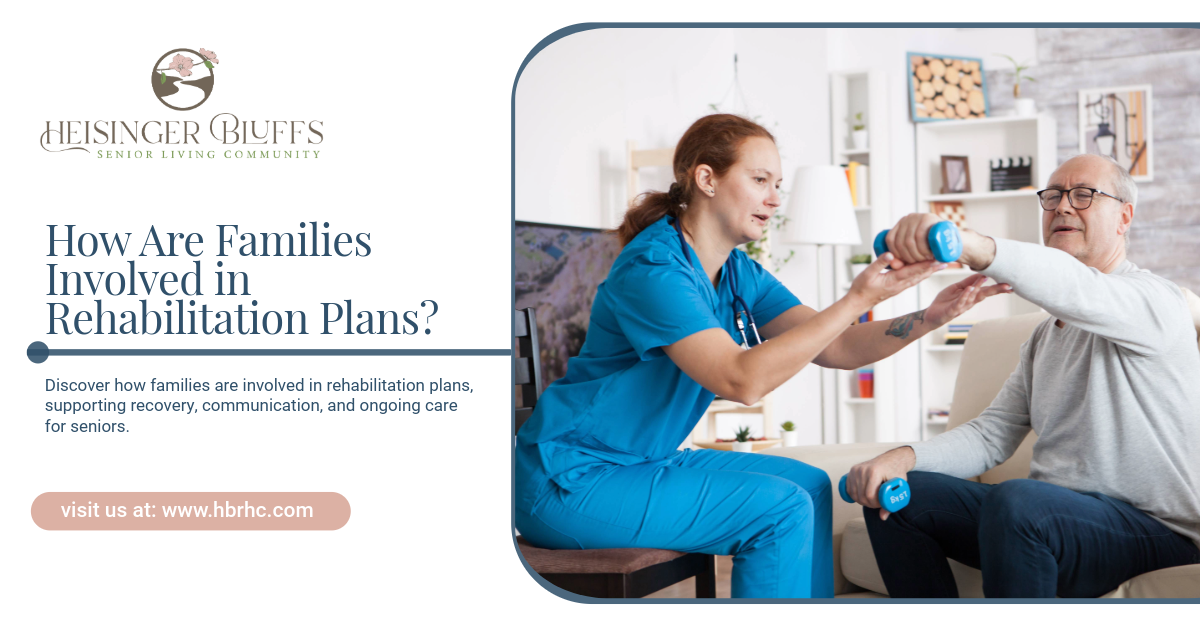How Senior Living Communities Help Residents Maintain Their Independence

Aging doesn’t mean giving up independence. For many seniors, moving to a senior living community actually enhances their ability to live life on their own terms. These communities are designed to provide support while encouraging autonomy, ensuring residents can continue their daily routines, hobbies, and social lives with confidence.
In this blog, we’ll explore the many ways senior living communities help residents maintain their independence, from personalized care plans to engaging activities and innovative technology.
The Importance of Independence for Seniors
Maintaining independence is crucial for seniors' emotional and physical well-being. It provides:
- A sense of purpose – Engaging in daily tasks and activities promotes self-worth.
- Better mental health – Staying active and social reduces the risk of depression.
- Physical well-being – Encouraging movement and activity supports overall health.
Senior living communities are designed to balance support with autonomy, allowing residents to thrive in a safe and engaging environment.
How Senior Living Communities Promote Independence
1. Personalized Care Plans
Not all seniors require the same level of care. Senior living communities create individualized care plans to ensure residents receive just the right amount of support without unnecessary limitations. These plans include:
- Assistance with daily activities like dressing, bathing, and medication management—only when needed.
- Scheduled health checkups to monitor well-being while encouraging self-care.
- Access to medical professionals for peace of mind without intrusive oversight.
By offering tailored support, residents can maintain as much independence as possible while receiving help only when necessary.
2. Maintenance-Free Living
Household chores and home maintenance can become challenging with age. Senior living communities provide:
- Housekeeping services – Regular cleaning ensures a tidy living space without physical strain.
- Laundry assistance – Residents can choose to do their own laundry or receive help.
- Home repairs and landscaping – No need to worry about fixing a leaky faucet or mowing the lawn.
With these daily burdens removed, seniors can focus on hobbies, socializing, and enjoying life.
3. Engaging Social Opportunities
Socialization is a key component of maintaining independence. Senior living communities offer:
- Clubs and interest groups – From book clubs to gardening groups, there are activities for everyone.
- Group outings – Trips to museums, theaters, and local attractions keep residents engaged.
- Social events – Community dinners, holiday parties, and game nights foster friendships.
These opportunities prevent isolation and encourage active participation in community life.
4. Wellness and Fitness Programs
Staying physically active is essential for independence. Senior living communities provide a variety of wellness programs, including:
- Exercise classes – Chair yoga, water aerobics, and strength training tailored for seniors.
- Walking paths and fitness centers – Safe environments for daily movement.
- Personalized wellness plans – Programs designed to support mobility and overall health.
Regular exercise helps residents maintain strength, flexibility, and balance, reducing the risk of falls and injuries.
5. Nutritious and Flexible Dining Options
Nutrition plays a vital role in maintaining energy and overall health. Senior living communities offer:
- Chef-prepared meals – Balanced, nutritious meals that cater to dietary needs.
- Flexible dining schedules – Residents can eat when they prefer, just like at home.
- Independent cooking options – Many communities offer kitchenettes for those who enjoy cooking.
This balance allows residents to enjoy meals that suit their preferences while ensuring they receive proper nutrition.
6. Safety and Security Without Restriction
Safety is a top priority, but senior living communities ensure security measures do not limit residents’ independence. Features include:
- Emergency call systems – Quick access to assistance when needed.
- 24/7 staff availability – Help is always nearby without being intrusive.
- Secure entrances and exits – Ensuring safety while allowing freedom to move around.
These measures provide peace of mind for residents and their families while allowing seniors to remain active and independent.
7. Transportation Services for Easy Mobility
Driving can become difficult with age, but that doesn’t mean giving up independence. Senior living communities provide:
- Scheduled transportation – Trips to doctors' appointments, shopping centers, and social outings.
- On-demand shuttle services – Allowing residents to run errands or visit friends at their convenience.
- Community-organized outings – Group trips to cultural events, parks, and local attractions.
Reliable transportation ensures residents can continue enjoying life outside the community.
8. Technology for Independence
Advancements in technology have made it easier for seniors to stay connected and independent. Many senior living communities provide:
- Smart home features – Voice-activated assistants for reminders and communication.
- Virtual medical consultations – Access to healthcare professionals from the comfort of home.
- Tech support and training – Helping residents use smartphones, tablets, and computers with confidence.
These tools empower seniors to stay in touch with loved ones, manage their health, and navigate daily life with ease.
9. Encouraging Lifelong Learning and Hobbies
Senior living communities offer programs that promote intellectual and creative engagement, including:
- Educational classes – Guest speakers, workshops, and online courses.
- Arts and crafts – Painting, knitting, and other creative activities.
- Music and entertainment – Live performances and sing-along sessions.
Pursuing passions and learning new skills keeps residents engaged and mentally sharp.
The Role of Senior Living Staff in Supporting Independence
Staff members in senior living communities play a vital role in helping residents maintain independence. They provide:
- Encouragement – Motivating residents to stay active and engaged.
- Respectful assistance – Offering help without taking over tasks unnecessarily.
- Personalized attention – Recognizing each resident’s unique needs and preferences.
This balance of support and autonomy ensures residents feel empowered rather than dependent.
Making the Right Choice for Independence
Choosing a senior living community is a significant decision. When evaluating options, consider:
- The level of support offered – Does the community provide flexible assistance tailored to individual needs?
- Amenities and activities – Are there opportunities for residents to stay active and engaged?
- The environment – Is the community designed to promote independence and social connection?
At Heisinger Bluffs, we prioritize the independence of our residents by offering personalized care, engaging activities, and a secure yet flexible environment. Our community is designed to help seniors live life on their own terms while enjoying the support they need. Contact us today to learn more about how we can help your loved one maintain their independence.
Frequently Asked Questions
Will my loved one lose their independence in a senior living community?
No. Senior living communities are designed to enhance independence by providing support only when needed, ensuring residents can continue their daily routines and activities.
Can residents continue driving or going out on their own?
Yes, as long as they are able to do so safely. Many communities offer transportation services for those who prefer not to drive.
What if my loved one’s needs change over time?
Senior living communities offer flexible care plans that can be adjusted as a resident’s needs evolve, ensuring they receive the right level of support at every stage.
Sources:
- https://www.waldenu.edu/online-doctoral-programs/phd-in-human-services/resource/helping-the-elderly-maintain-independence
- https://pmc.ncbi.nlm.nih.gov/articles/PMC6486144/
- https://www.cdc.gov/physical-activity-basics/health-benefits/older-adults.html
- https://medlineplus.gov/nutritionforolderadults.html
- https://pmc.ncbi.nlm.nih.gov/articles/PMC3209521/











